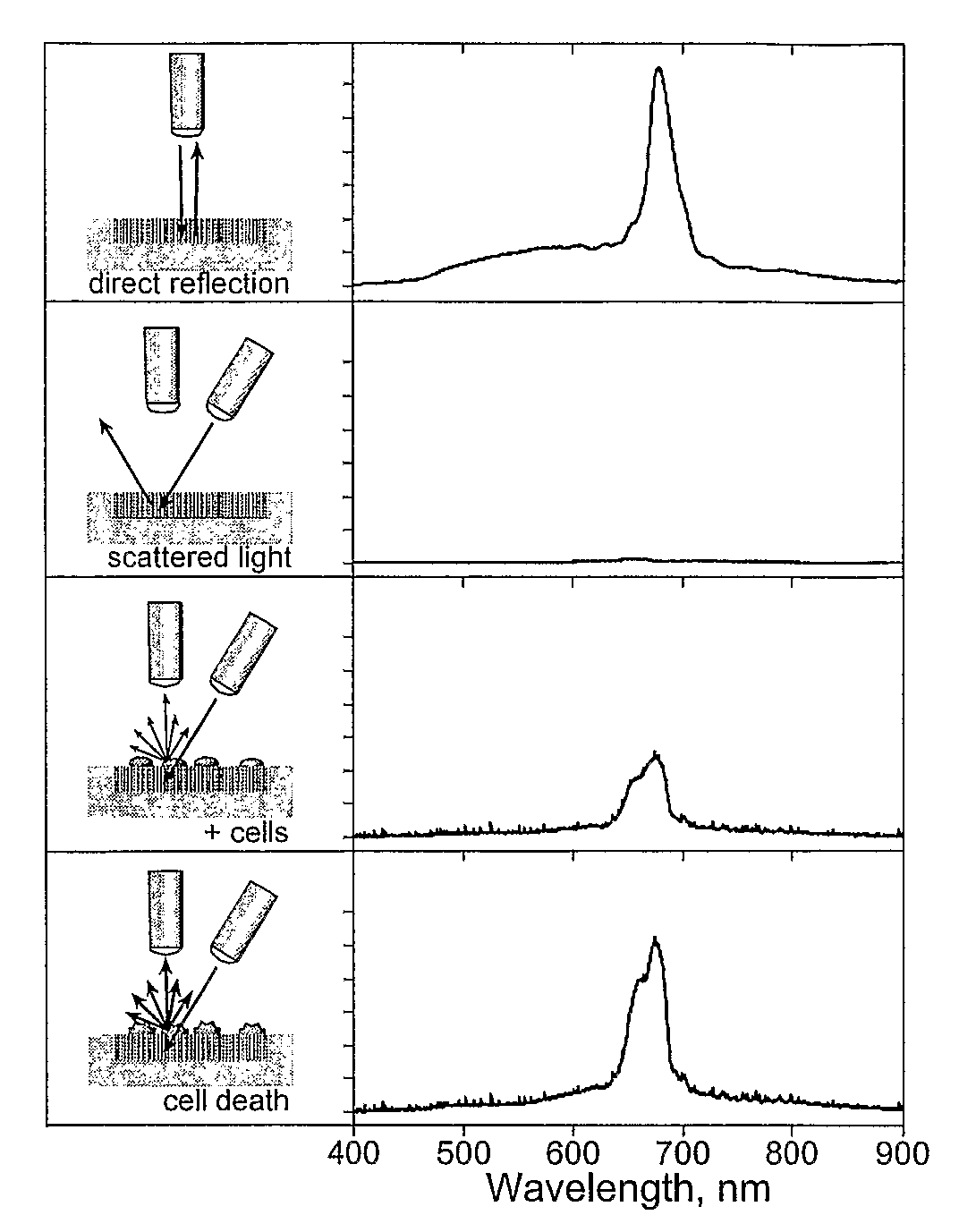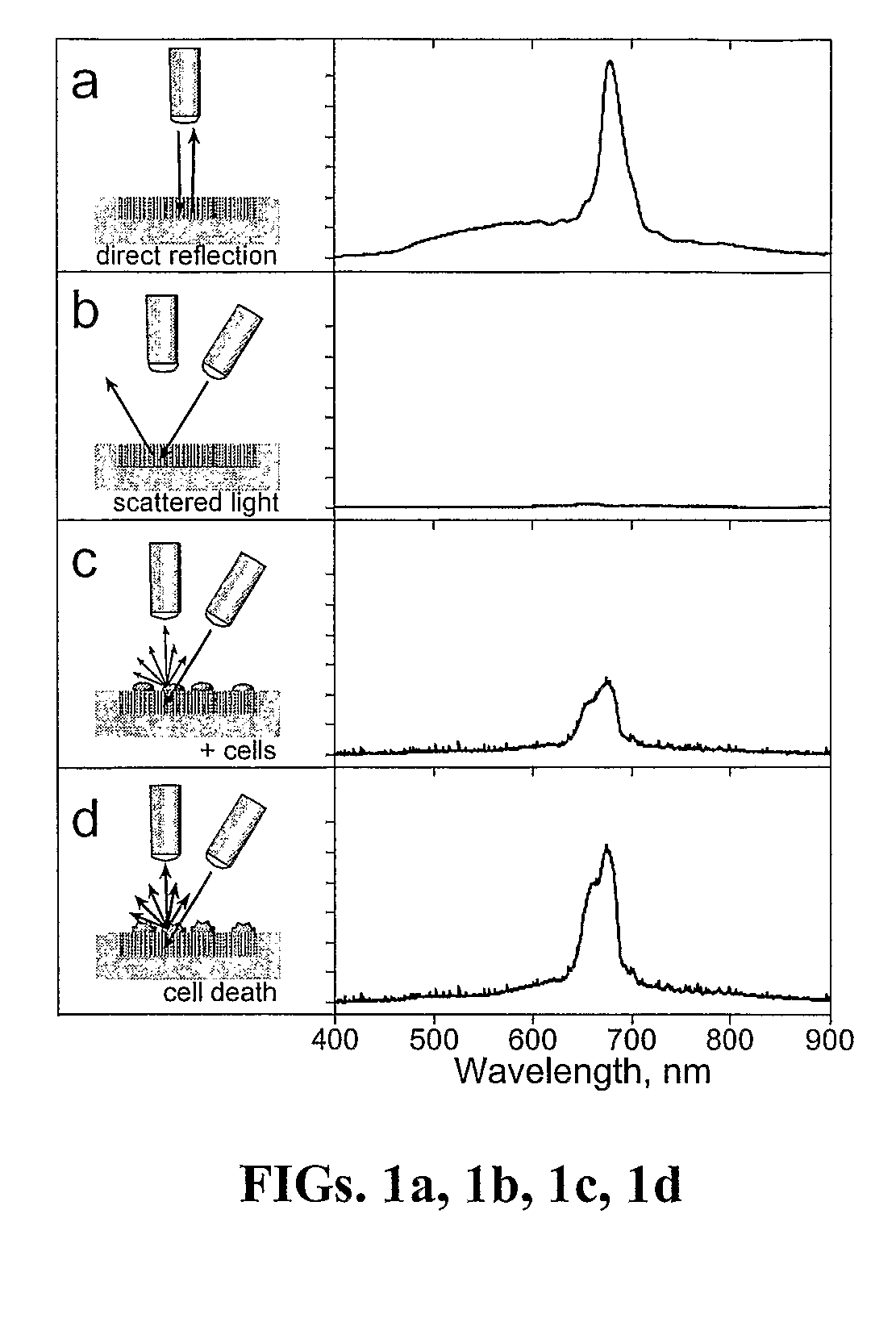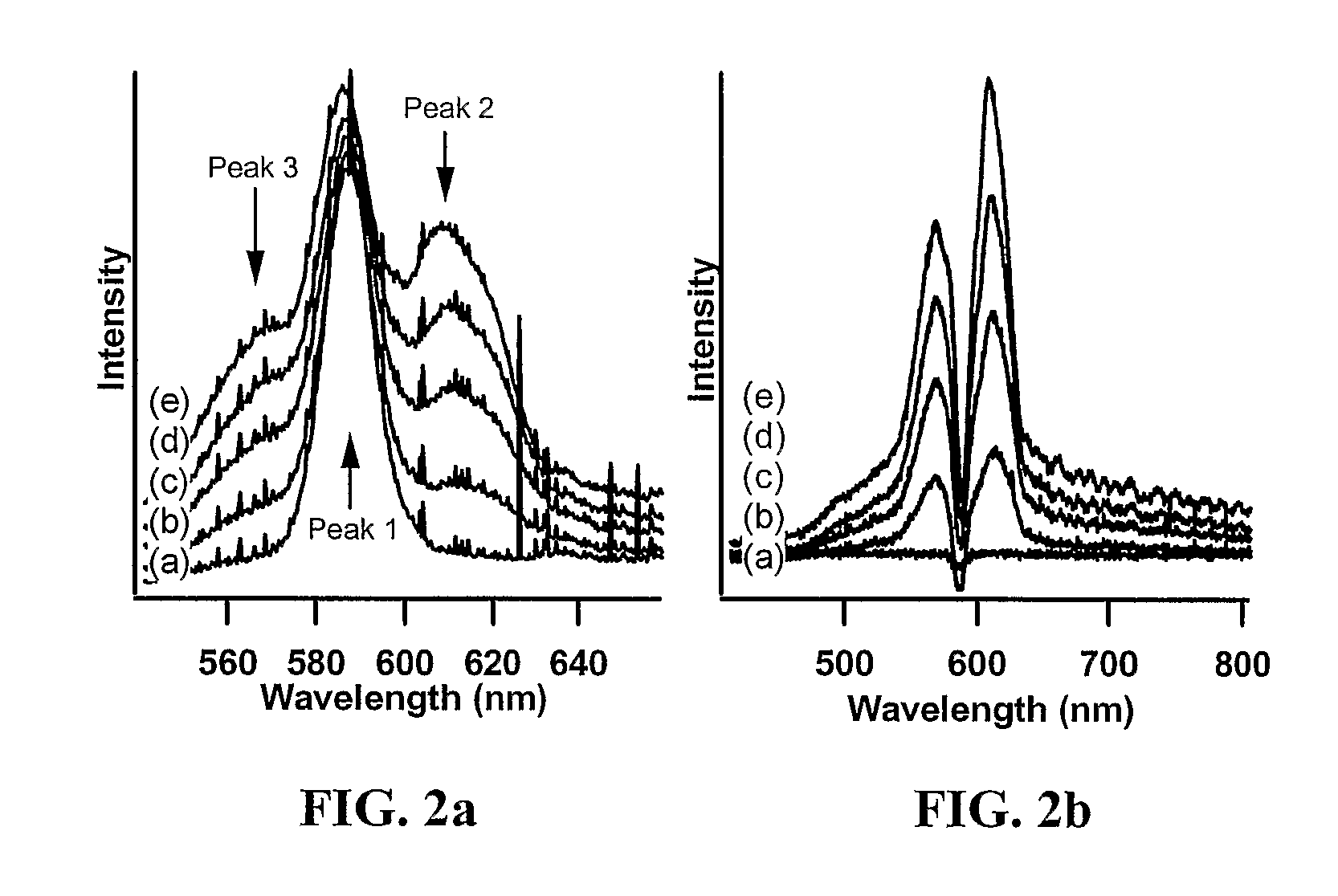Porous Photonic Crystal with Light Scattering Domains and Methods of Synthesis and Use Thereof
a photonic crystal and light scattering technology, applied in the field of optical nanostructures and optical nanostructure synthesis, can solve the problem that the changes in cellular physiology cannot be readily converted into electronic signals in real-time, and achieve the effect of increasing scattering efficiency and being easy to solv
- Summary
- Abstract
- Description
- Claims
- Application Information
AI Technical Summary
Benefits of technology
Problems solved by technology
Method used
Image
Examples
Embodiment Construction
[0026]The invention exploits a scattering phenomenon whereby the intensity and / or the color of scattered light impinged on a porous or photonic substrate changes as a result of physiological changes in the cells overlaying the substrate. The intensity changes occur based on morphological changes in the cells that affect the efficiency of the scattering process. The color changes occur when substances, such as cells or molecules excreted by cells, enter the pores of the substrate. More specifically, the invention includes a porous or photonic substrate having a well-defined and highly tunable color, such as porous silicon (Si), porous alumina, porous Ge, porous GaAs, porous SiO2 and porous polymer, for example. The porous substrate or cells seeded on a porous substrate are exposed to an analyte, a toxin, a virus, or other macromolecule that can affect cellular physiology, and changes in the scattered light are observed over time to determine cell morphology on and / or chemical composi...
PUM
| Property | Measurement | Unit |
|---|---|---|
| wavelength | aaaaa | aaaaa |
| thickness | aaaaa | aaaaa |
| current density | aaaaa | aaaaa |
Abstract
Description
Claims
Application Information
 Login to View More
Login to View More - R&D
- Intellectual Property
- Life Sciences
- Materials
- Tech Scout
- Unparalleled Data Quality
- Higher Quality Content
- 60% Fewer Hallucinations
Browse by: Latest US Patents, China's latest patents, Technical Efficacy Thesaurus, Application Domain, Technology Topic, Popular Technical Reports.
© 2025 PatSnap. All rights reserved.Legal|Privacy policy|Modern Slavery Act Transparency Statement|Sitemap|About US| Contact US: help@patsnap.com



